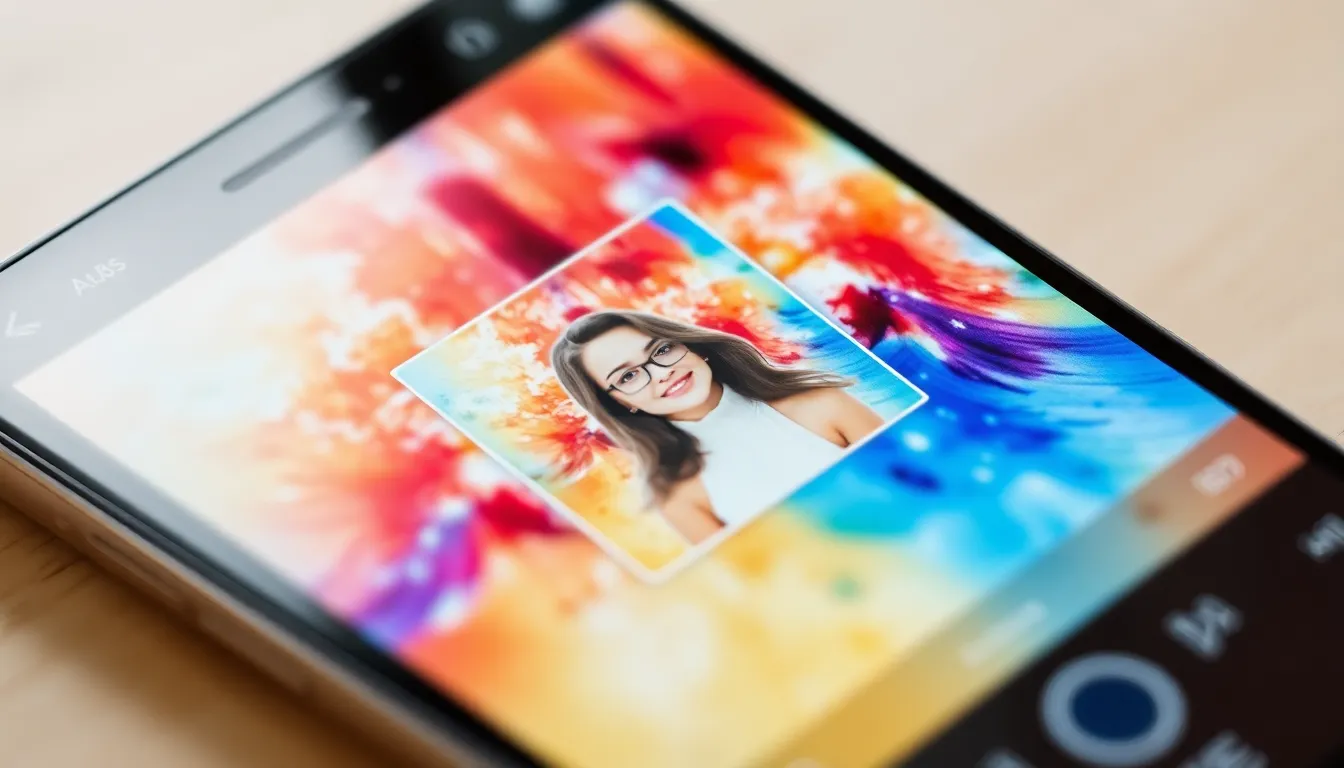In a world where everyone’s a photographer, standing out is key. Adding a snazzy background to your pictures can transform the ordinary into the extraordinary. Whether it’s a beach scene that says “I’m on vacation” or a funky pattern that screams “look at me,” the right background can elevate your photos from drab to fab in seconds.
Table of Contents
ToggleUnderstanding the Basics of Background Editing
Editing backgrounds in photos enhances their visual appeal. A captivating background grabs attention and adds depth to images.
Importance of Backgrounds in Photos
Backgrounds significantly influence overall image quality. They shape the viewer’s perception by adding context to the subject. An appealing background, like a sunset or a textured wall, transforms ordinary photos into striking visuals. Quality backgrounds create focus and lead viewers’ eyes toward the main subject, resulting in a more engaging composition. Choosing the right background sets a mood and conveys a message, ensuring the picture resonates with the audience.
Tools Available on iPhone for Editing
Editing tools on iPhone provide diverse options for background customization. The Photos app includes features for removing and replacing backgrounds seamlessly. Users can access the Markup tool for artistic edits, allowing manual adjustments. Third-party apps, like Canva and Photoshop Express, offer templates and advanced editing capabilities too. These tools enable precise control, quick edits, and enhanced creativity while changing backgrounds. With easy navigation, users can transform their photography effortlessly.
Step-by-Step Guide to Adding a Background

Adding a background to an image on an iPhone enhances its appeal and creativity. This section explains how to use the Photos app and third-party applications effectively.
Using the Photos App
Open the Photos app and select the image that needs a new background. Tap the “Edit” button located in the upper right corner. Next, choose the “Markup” option. Use the lasso tool to outline the subject in the photo. After selecting the subject, hit “Cut” to remove it from the original background. Now, create a new image or select a pre-existing background from your library. Once the background is ready, paste the cut subject onto it. Adjust the size and position as desired, then save the final image.
Utilizing Third-Party Apps
Many third-party apps offer advanced features for adding backgrounds. Applications like Canva and Photoshop Express provide user-friendly interfaces and extensive templates. After downloading the preferred app, open it and select a photo to edit. Each app typically has options for background removal, which streamlines the process. Once the main subject is isolated, users can choose from various background options within the app. Edit the new background, adjusting colors and effects to create a cohesive look. Save the final product to the camera roll directly from the app with ease.
Tips for Choosing the Right Background
Selecting a suitable background plays a crucial role in enhancing your image. Consider the following tips for making the best choice.
Color and Mood Considerations
Color impacts the mood of a photo. Bright colors evoke feelings of joy, while muted tones create calmness. Assess the overall theme of the image before choosing a background. Match background colors with the main subject to establish harmony. For example, a soft pastel background works well with floral subjects, enriching the visual narrative. Using contrasting colors can also help the subject pop, drawing focus to it. Always be mindful of how colors interact; complementary colors can enhance appeal, while clashing colors may detract from the subject.
Ensuring Background Compatibility
Confirm that the background complements the main subject. Look for backgrounds that share similar themes or aesthetics with the image. Urban scenes suit modern compositions, while natural landscapes enhance outdoor subjects. Assess depth and focus too; a busy background may divert attention from the subject. Keep scale in mind; small subjects can get lost in expansive backgrounds. Use close-up details when necessary to establish context and draw viewers in, creating a cohesive visual experience. Prioritizing compatibility ensures a polished finish that enhances the overall image quality.
Troubleshooting Common Issues
Common issues can arise when adding a background to a picture on an iPhone. Understanding these troubleshooting tips can enhance the editing experience.
Issues with Background Quality
Background quality often impacts the overall look of an image. Low-resolution backgrounds can result in pixelation, causing the image to appear unprofessional. Choosing a high-resolution background guarantees a cleaner appearance. Lighting inconsistencies between the subject and background can also detract from the image. Matching light sources creates a more cohesive look. When utilizing third-party apps, be aware of the features that support resolution adjustments. Users may encounter issues when backgrounds don’t seamlessly blend, highlighting the importance of color harmony between the subject and background.
Saving and Sharing Your Edited Photos
Saving and sharing edited photos can present challenges. In the Photos app, ensure the edited image saves properly to the camera roll. Users often find the sharing options within each app vary. Not all apps provide direct sharing to social media platforms. Confirm the destination settings when sharing or exporting an image. While using third-party apps, users might experience issues with file formats. Selecting a widely compatible format, like JPEG, often resolves sharing discrepancies. Checking permissions on devices can improve successful sharing as well, enhancing the final outcome.
Adding a background to a picture on an iPhone is a straightforward process that can dramatically elevate the visual appeal of photos. By utilizing tools like the Photos app or third-party applications, users can explore their creativity and enhance their images with captivating backgrounds.
Choosing the right background is crucial for achieving a polished look. It’s essential to consider color harmony and the overall theme to ensure that the subject remains the focal point. With the right techniques and a bit of practice, anyone can transform ordinary images into stunning works of art.
Embracing these editing tools not only enhances photography skills but also allows for personal expression in every shot taken.




